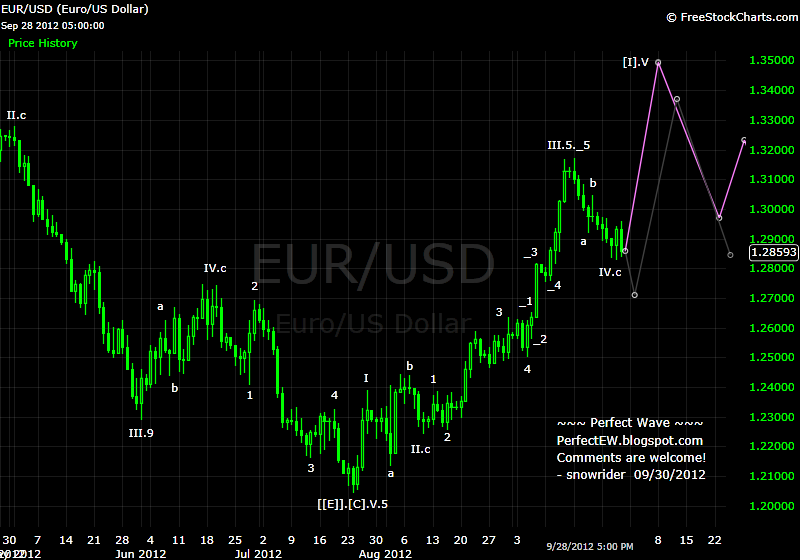|
|
楼主 |
发表于 2012-9-30 07:43 PM
|
显示全部楼层
Wave Talk - Confirm an Elliott Wave Count (and EUR Alternative Count)
Nice to hear from you again kotlt! Thanks for contributing your idea and sharing the link of that interesting article ("Which Method Can Traders Use to Confirm an Elliott Wave Count?"). Let's summarize that article first before we start our discussion. According to "Jeffrey Kennedy Channeling Technique", "Five waves break down into three channels, and three waves need only one. The price movement in and out of these channels confirms each Elliott wave." Those three channels are: "Base Channel" (defined by wave-1 and wave-2), "Acceleration Channel" (defined by wave-2 and wave-3), and "Deceleration Channel" (defined by wave-4). Jeffrey Kennedy concludes that "prices need to break out of the base channel to confirm the trend. Movement out of the acceleration channel confirms that wave four is in force, and penetration of the deceleration channel lines signals that wave five is under way."
One of the hardest things of playing Elliott Wave is to confirm a wave count. That article demonstrates a good way of confirming a wave count. I have seen many other approaches from other EW analysts over years. Some utilizes price divergence of some TA indicators, some utilizes the breakout (or crossover) of some moving averages, and some utilizes the crossover signal of some TA indicators. Jeffrey Kennedy coins that approach by using his name (LOL ... I could have coined many of my approaches by using my real name), but his approach is actually based on and utilizes Dow Theory's price channel. I believe that many EW analysts have started using price channel approaches long before Jeffrey Kennedy put his name on that approach. Still, it is a good approach for identifying wave counts though.
About your EUR wave count, it is an alternative wave count, and it looks good to me! As I mentioned that there could be infinitely many possible wave counts for a given chart. I focus more on the harmony between waves - in price range and in timespan. I have another alternative count for the EUR. Please see the attachment.
 |
|